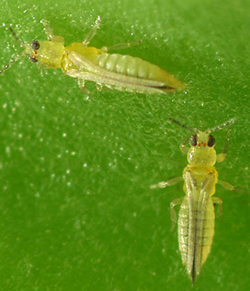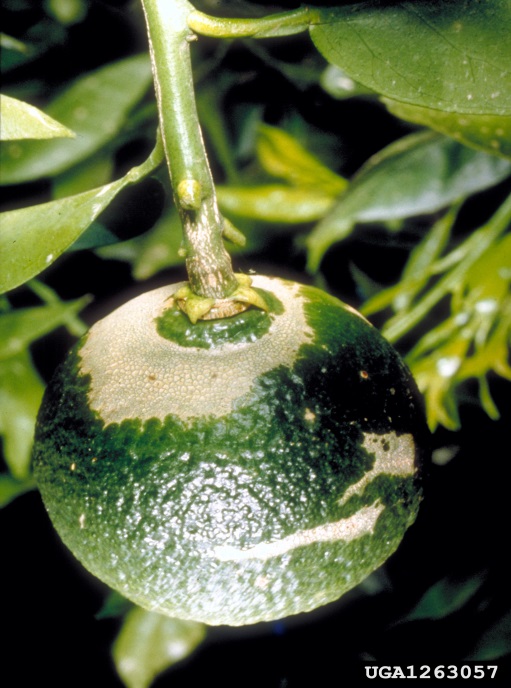
South African citrus thrips
| Primefact number | Edition | Published | Author |
|---|---|---|---|
| 1196 | Second | Apr 2017 | Plant Biosecurity and Product Integrity |


South African citrus thrips (SACT) (Figure 1) is a pest of citrus, especially sweet orange.
SACT is sometimes a pest on mango.
SACT feeds on soft new leaves. It does not feed on mature leaves. When leaves harden off SACT attacks young fruit.
South African citrus thrips (Scirtothrips aurantii) is an exotic plant pest not present in Australia. This pest is a serious threat to Australia’s citrus industry.
Notifiable status
South African citrus thrips (Scirtothrips aurantii) is a notifiable plant pest in NSW.
All notifiable plant pests and diseases must be reported within 1 working day. You can report notifiable plant pests and diseases by one of the following methods:
- Call the Exotic Plant Pest Hotline 1800 084 881
- Email biosecurity@dpi.nsw.gov.au with a clear photo and your contact details
- Complete an online form
A full list of notifiable plant pests and diseases can be found in Schedule 2 of the NSW Biosecurity Act 2015.
Damage
Silvering of the leaf surface and thickening of young leaves are signs of SACT feeding.
Feeding thrips leave brown frass on the leaves and fruit.
Feeding damage by SACT on young fruit shows as a silver grey ring around the calyx (Figure 2).
Cosmetic damage results in the fruit being downgraded for the fresh fruit market. Taste and eating quality of the fruit are not affected.
A heavy infestation can result in early death of leaves and distorted fruit.
If flushes of young leaves are severely attacked late in the season then the crop of the following season may be reduced.
Description
SACT go through five development phases: egg, two active larval instars, two relatively inactive pupal instars and winged adults.
Eggs are inserted into soft, young tissues of leaves, stems and fruit. Eggs are bean-shaped and tiny.
The first and second larval stages are yellow to orange in colour, cigar-shaped and just visible to the naked eye. They are found on green plant parts where they are actively feeding.
Pupation occurs in sheltered places such as among leaf litter on the ground, in the crevices of bark or occasionally beneath the calyx of fruit.
Winged adults are yellow-brown in colour and are less than 1 mm in length. They are normally found on the green plant parts where they feed.
Breeding is almost continuous. The lifecycle can be completed in less than 30 days. Development is slowed in winter.
Behaviour
SACT adults and larvae feed on the surface of young leaves and on young fruit. They do not feed on mature leaves.
SACT may be concealed under the calyx.
Host range
SACT is usually found on sweet oranges but have a broad host range for feeding and development.
SACT has been found on more than 50 plant species from across many plant families.
In South Africa SACT is sometimes a pest of mangoes especially if they are growing near infested citrus trees.
World distribution
SACT is native to Africa. The thrip is widespread from South Africa to Egypt and also occurs in West Africa and the Cape Verde Islands.
A biotype of Scirtothrips aurantii was detected in Southeast Queensland in 2002 on the weed mother of millions. Subsequent surveillance showed that it is restricted to mother of millions. SACT has not been found of fruit crops such as citrus and mango in Queensland.
Spread and movement
Long distance spread of SACT occurs through the movement of infested plants or plant parts.
Short distance spread may be wind assisted.
Actions to minimise risks
Put in place biosecurity best practice actions to prevent entry, establishment and spread of pests and disease:
- practice “Come clean, Go clean”
- ensure all staff and visitors are instructed in and adhere to your business management hygiene requirements
- source propagation material of a known high health status from reputable suppliers
- keep records

